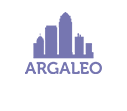Visual Twin
Discover a grasping view of The Netherlands
My graduation project, in collaboration with fellow student Dirk van der Lep, involved the development of a tool within Unreal Engine for The Imagineers, a company specialized in visualizations and citizen engagement. The objective was to integrate visualizations and create a digital twin, with a focus on societal impact in the context of urban planning. Our project aimed to be relevant not only to project initiators but also to ordinary citizens. We combined our expertise in User Interface/User Experience and development to achieve this. The end result is an impressive product that brings together technical innovation and civic engagement.




